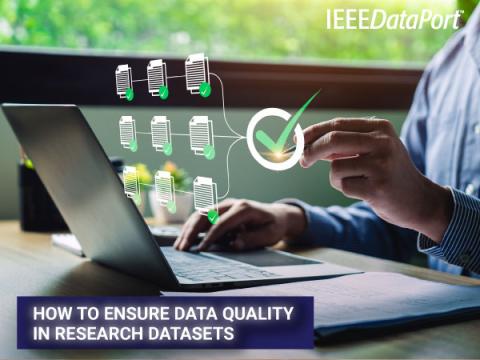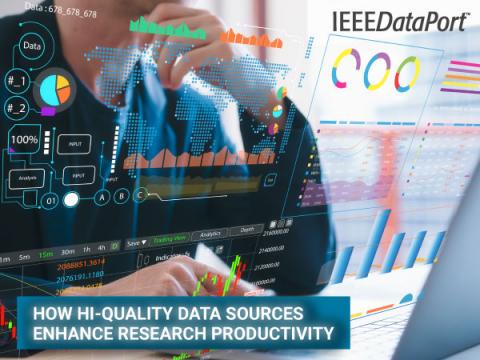What Is Data Integration?
Once seen as a routine technical task with little influence on research outcomes, data integration has rapidly evolved and at times has become the backbone of modern research innovation. By merging data from diverse sources, it empowers researchers to uncover new insights, fuel advanced analytics, and drive machine learning initiatives. Imagine turning fragmented datasets into a cohesive, rich resource that enhances your team’s capacity for deep analysis and informed decision-making. For research departments, this unification isn’t just about convenience; it’s the key to unlocking complex, cross-disciplinary discoveries and staying at the forefront of data-driven breakthroughs.
Data integration typically involves several key steps:
- Data Ingestion: Collecting data from diverse sources such as databases, applications, and cloud services.
- Data Transformation: Cleaning and converting data into a consistent format to ensure compatibility and usability.
- Data Storage: Storing processed data in centralized repositories like data warehouses or lakes for easy access and analysis.
Importance of Data Integration for Researchers
Data integration is essential for researchers because it significantly enhances the quality and usability of data. Here are some reasons why it matters:
- Improved Access and Data Quality: Researchers can eliminate inconsistencies and errors by integrating data from multiple sources, ensuring that their analyses are based on accurate and reliable information.
- Greater Process Efficiency: Data integration automates the consolidation of datasets, reducing the time and effort required to gather and prepare data for analysis manually.
- Deeper Insights: With integrated datasets, researchers gain a holistic view of their research subjects, allowing them to uncover patterns and insights that might be missed when analyzing isolated datasets.
- Enhanced Data Governance: Integration platforms provide better control over data governance by ensuring compliance with data protection regulations and maintaining data security.
- Facilitated Collaboration: Unified datasets enable easier sharing and collaboration among research teams, fostering a more collaborative research environment.
- Automation of Data Sharing: Data integration tools can automate the sharing of updated datasets across platforms, ensuring that all stakeholders have access to the latest information.
Role of Data Integration Software
Data integration software plays a pivotal role in this process by providing the necessary tools to streamline and automate data integration tasks. These tools often include features such as:
- Data Mapping: Aligning data fields from different sources to ensure consistency.
- Real-time Processing: Enabling real-time data updates across systems.
- Cloud Integration Platforms: Facilitating the integration of cloud-based applications and services.
In conclusion, data integration is fundamental for researchers aiming to leverage comprehensive datasets for advanced analytics. By utilizing robust data integration software and cloud integration platforms, researchers can enhance their ability to generate meaningful insights, improve operational efficiency, and maintain high data access and quality standards.
Common Challenges to Data Integration That Can Threaten Data Quality
Data integration is a complex process that, when not executed properly, can compromise data quality and hinder research outcomes. Researchers face several challenges that can impact the reliability and accuracy of their integrated datasets. Applying data integration methods employing data integration best practices is critical to overcoming these challenges.
Inconsistent Data Formats
One of the most prevalent data integration challenges is inconsistent data formats. Data from different sources often come in various formats, such as CSV, JSON, or XML, complicating the integration process. This inconsistency can lead to errors in data interpretation and analysis, ultimately affecting the quality of research findings. Implementing data integration best practices, such as standardizing data formats and using robust data integration methods, can help mitigate these issues.
Managing Large Volumes of Data
The sheer volume of data that researchers deal with today poses another significant challenge. Integrating large datasets requires substantial computational resources and can be time-consuming. This complexity can slow down research processes and delay insights. To address this, researchers should employ scalable data integration tools and cloud integration platforms that can efficiently handle large volumes of data.
Breaking Down Data Silos
Data silos occur when data is isolated within specific departments or systems, making it difficult to achieve a comprehensive view across an organization. These silos hinder collaboration and create issues with data access that can lead to incomplete analyses. Breaking down these silos involves creating centralized data repositories and ensuring seamless access across teams. Utilizing cloud-based solutions can facilitate this process by providing a unified platform for data storage and access.
Addressing Privacy and Security Concerns
Data privacy and security are critical concerns in the integration process. As researchers integrate data from multiple sources, they must ensure compliance with regulations like GDPR or HIPAA to protect sensitive information. Failure to do so can lead to breaches and legal issues. Implementing strong encryption methods, access controls, and regular audits are essential for maintaining data security during integration.
Verifying Source Data Quality
Ensuring the quality of source data is fundamental to successful integration. Poor-quality data can lead to inaccurate analyses and flawed conclusions. Researchers must verify the accuracy and completeness of their source data before integrating it into larger datasets. This involves using automated validation tools and establishing clear criteria for data quality assessment.
Delays in Delivering Data
Timely access to integrated data is crucial for real-time analysis and decision-making. Delays in delivering integrated datasets can impede research progress and reduce the relevance of findings. To overcome this challenge, researchers should adopt automated data integration methods that support real-time processing.
By understanding these common challenges and implementing effective strategies, researchers can enhance their data integration efforts and ensure high-quality datasets that support robust analytical outcomes.
Benefits of Utilizing Data Integration Tools
Modern data integration tools offer myriad benefits that significantly enhance data access and quality and provide deeper insights into trends that might otherwise be overlooked. These tools for data integration are essential for researchers and organizations aiming to maintain data hygiene and streamline their analytical processes.
Greater Clarity of Data Findings
Data integration tools facilitate the consolidation of disparate datasets into a single, coherent view. This unified perspective allows researchers to gain greater clarity from their data findings, enabling them to identify patterns and trends more effectively. Using the best data integration tools, researchers can ensure that their analyses are based on comprehensive and accurate datasets, leading to more reliable conclusions.
Higher Quality, Clean Data
One of the primary advantages of utilizing tools for data integration is the improvement in data quality. These tools often include features for data cleansing, such as deduplication and error correction, which help to ensure that the data is both clean and trustworthy. By maintaining high-quality data, organizations can make more informed decisions and reduce the risk of errors in their analyses.
Reduced Organizational Friction
Data integration tools break down silos by creating a centralized hub of information that is easily accessible across departments. This accessibility fosters interdepartmental cooperation and reduces organizational friction. When teams have access to the same high-quality data, collaboration becomes more efficient, leading to improved productivity and innovation.
Centralized Information Hub
A key benefit of data integration tools is creating a centralized information hub. This centralization simplifies data access and management, allowing researchers to quickly retrieve the necessary information without navigating multiple systems. This saves time and ensures that everyone in the organization works with the most current and accurate data available.
Enhanced Data Security
Modern data integration tools incorporate advanced security features to protect sensitive information. By centralizing data management, these tools offer a more thorough approach to data security, ensuring compliance with privacy regulations and reducing the risk of breaches. This is particularly important for researchers handling confidential or proprietary datasets.
Flexibility to Adapt to Trends
Data integration tools provide the flexibility needed to adapt quickly to new trends or changes in research focus. With real-time data processing capabilities, these tools allow organizations to update their datasets continuously, ensuring that analyses reflect the latest information. This adaptability is crucial for staying competitive in fast-paced research environments.
In summary, leveraging the best data integration tools offers substantial benefits in maintaining data hygiene and uncovering valuable insights. By improving data quality, enhancing collaboration, and ensuring robust security measures, these tools empower researchers to conduct more effective and impactful studies.
How IEEE DataPort’s Data Integration Platform Can Help You Connect the Dots
The IEEE DataPort data integration platform and Amazon Web Services (AWS) provide robust data integration solutions for researchers looking to consolidate datasets and enhance their research capabilities. By leveraging AWS's infrastructure, IEEE DataPort is the data integration provider that makes it easier for researchers to access, analyze, and manage their data by simplifying dataset management and integration.
Facilitating Dataset Access and Management
IEEE DataPort stores its datasets on Amazon Simple Storage Service (S3), a highly scalable and secure cloud storage service. Each subscriber has an AWS access key, allowing them to easily access and manage datasets directly from AWS. This access key simplifies downloading dataset files through a web browser or programmatically via the S3 protocol, ensuring researchers can seamlessly integrate these datasets into their existing workflows.
Simplified Data Transfer and Combination
The integration with AWS means that users can quickly transfer and combine datasets across different locations. The S3 interface supports command line tools and software development kits (SDKs), enabling researchers to perform advanced analyses using their preferred tools. This capability is crucial for conducting complex computations and analyses that require significant processing power, which AWS provides through services like Amazon Athena, AWS Glue, and AWS Data Pipeline.
Automated Dataset Updates
One of the standout features of using IEEE DataPort with AWS is the ability to automate updates to datasets stored in S3. Researchers can program the S3 interface to update datasets regularly, ensuring they always have access to the most current data. This automation reduces the manual effort required to maintain dataset accuracy and consistency, allowing researchers to focus more on analysis than data management.
User-Friendly Upload Process
Uploading datasets to IEEE DataPort is made simple with a drag-and-drop feature that allows users to move files into their desired structure easily. This user-friendly approach breaks down barriers to analysis by making it straightforward for researchers to incorporate new data into their projects without needing extensive technical expertise.
Enhanced Research Development
By providing a centralized hub for data storage and integration, IEEE DataPort facilitates greater research development. It offers a comprehensive solution for managing large volumes of data while maintaining high standards of security and accessibility. Researchers can leverage these data integration solutions to gain deeper insights into their research areas, ultimately driving innovation and discovery.
In summary, IEEE DataPort's collaboration with AWS offers powerful data integration methods that streamline dataset management and enhance research capabilities. This platform simplifies access and analysis and ensures that researchers have the flexibility and tools needed to adapt to evolving research demands.
Tips for Integrating Consolidated Datasets with AWS
With the right approach, integrating consolidated datasets from IEEE DataPort into AWS can be streamlined and efficient. Here are some actionable tips to maximize the efficacy of your data integration efforts using data integration technologies, techniques, and solutions. Further value is realized through analyzing this data through your AWS subscription.
IEEE DataPort dataset files are stored on Amazon Simple Storage Service (S3), a widely used AWS storage service that offers industry-leading scalability, data availability, security, and performance. Every IEEE DataPort subscriber is given an AWS access key that they can use to access in AWS or upload datasets directly to AWS and begin to take advantage of the many benefits AWS S3 storage service has to offer on IEEE DataPort.
Utilize AWS Access Keys for Seamless Access
AWS Access Keys**: Ensure your AWS access keys are ready. These keys are essential for accessing datasets stored on Amazon S3. They allow you to download or programmatically access files directly through the S3 protocol. This setup simplifies transferring and managing datasets, making it a crucial step in efficient data integration.
Leverage AWS Computing Resources
Advanced Analysis: Take advantage of AWS's powerful computing resources within your AWS subscription such as Amazon Athena, AWS Glue, and AWS Data Pipeline. These tools enable more advanced data analysis and processing capabilities, allowing you to perform complex computations efficiently. By integrating these resources, you can enhance your data analysis workflows significantly.
Automate Dataset Updates
Real-time Updates: Configure your S3 storage to update datasets linked to IEEE DataPort servers automatically. This automated data integration technique ensures that your datasets are always current, reducing manual intervention and maintaining data accuracy. Regular updates are crucial for real-time data analysis and decision-making.
Simplify Uploads with Drag-and-Drop Features
User-Friendly Uploads: IEEE DataPort provides drag-and-drop functionality for uploading dataset files easily. This feature reduces the complexity of dataset uploads, allowing researchers to quickly integrate new data into their projects without extensive technical knowledge.
Implement Robust Data Integration Techniques
Data Integration Methods: Employ robust data integration techniques to ensure your datasets are properly consolidated and formatted for analysis. This includes using ETL (Extract, Transform, Load) processes to standardize data formats and ensure consistency across datasets.
Choose the Right Data Integration Vendors
Consider partnering with reputable data integration vendors offering comprehensive solutions tailored to your needs. These vendors can provide additional tools and support to enhance your data integration processes, ensuring seamless integration with AWS.
Following these tips, you can effectively integrate consolidated datasets from IEEE DataPort into AWS, leveraging cutting-edge data integration technologies and techniques. This approach enhances the efficiency of your research processes and ensures that your data is accurate, accessible, and ready for advanced analysis.
Maintain Clean, Clear Data with IEEE DataPort’s AWS Cloud Integration
Data integration is fraught with challenges such as inconsistent data formats, data silos, and security concerns, which can threaten both the quality of the data and data access. Overcoming these hurdles is crucial for maintaining high-quality, reliable datasets. Modern data integration solutions and cloud integration platforms are vital in addressing these issues by providing tools that ensure data consistency, security, and accessibility.
IEEE DataPort offers robust data integration solutions that leverage AWS cloud integration platforms to simplify dataset management. By facilitating seamless access to datasets stored on AWS S3, IEEE DataPort allows researchers to manage and analyze their data efficiently. This integration enhances research capabilities and ensures that data remains secure and up to date.
IEEE DataPort provides a comprehensive solution for researchers looking to streamline their data management processes and improve data quality. Visit their platform today to explore how IEEE DataPort can enhance your research efforts.
Learn More About IEEE DataPort’s Cloud Integrations
- 263 reads



